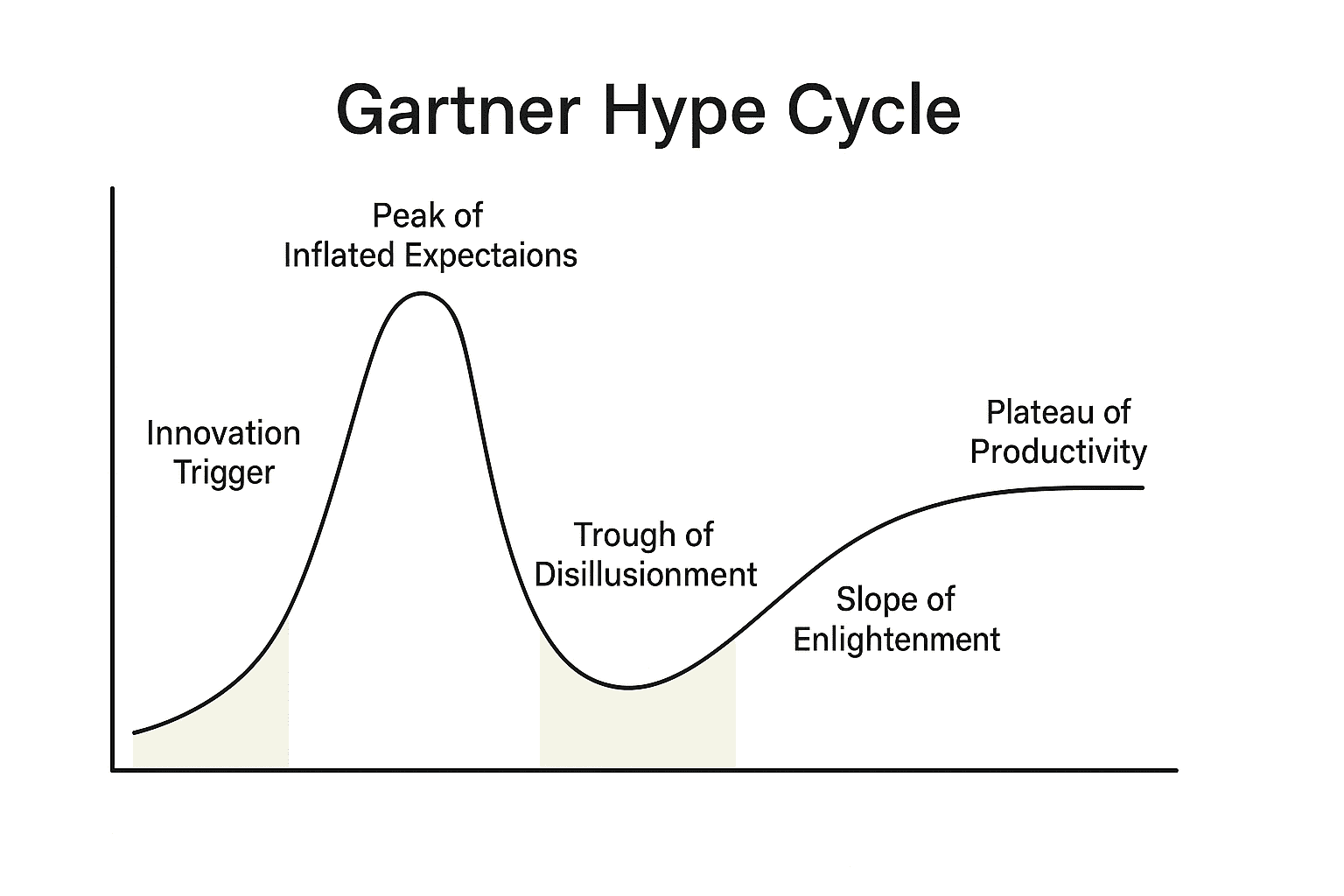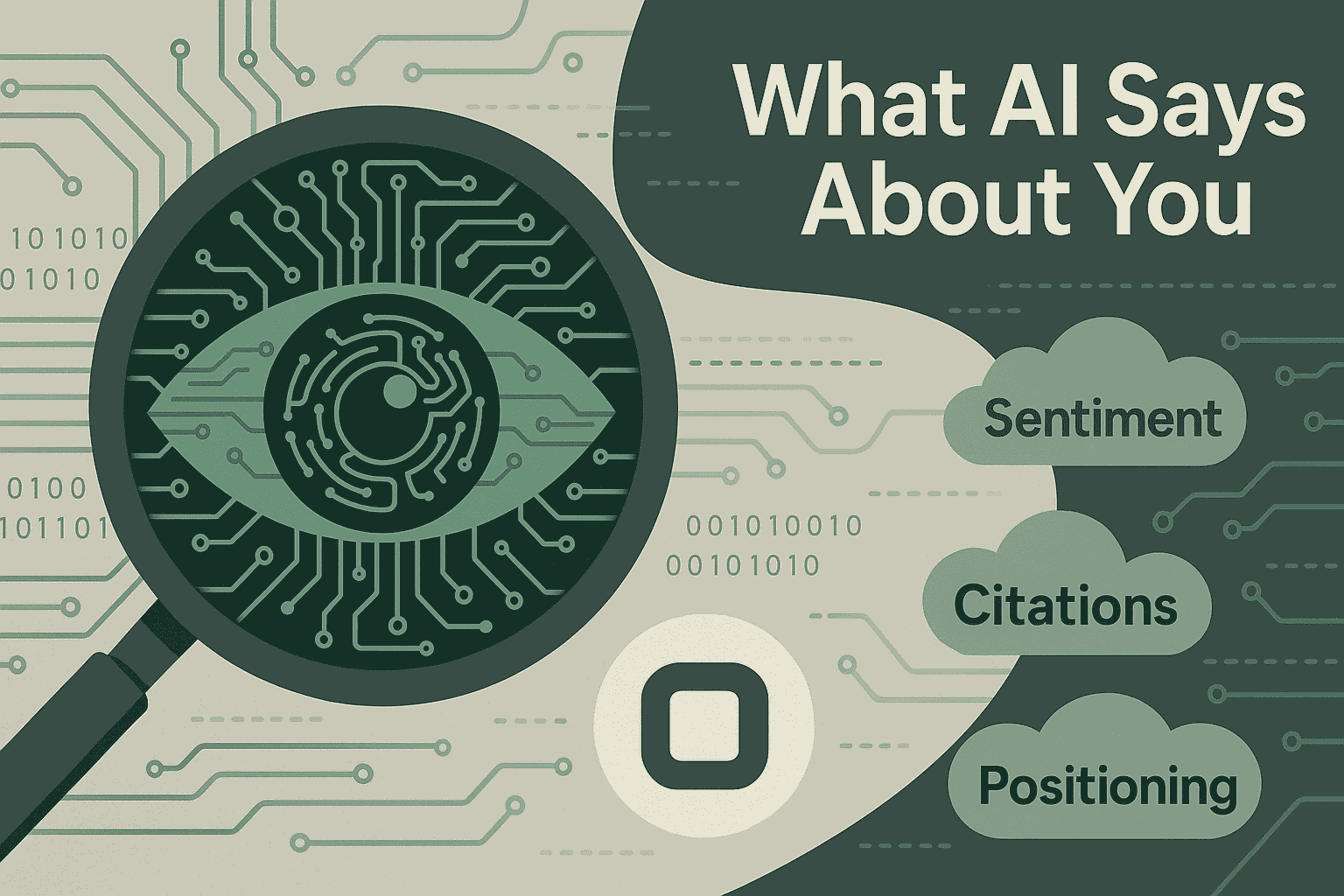How Artificial Intelligence Swings Between Genius and Hype — and Why Smart Businesses Learn to Tame It
Every new technology follows a path. It’s rarely straight, often dramatic, and almost always misunderstood. First comes fascination, then overconfidence, followed by disappointment — and, finally, maturity. Artificial Intelligence, the most disruptive technology of our era, is no exception. In fact, it’s the perfect textbook case.
This journey is described by Gartner’s famous Hype Cycle: a five-stage curve that maps how technologies evolve from bold promise to daily productivity. Understanding it isn’t just a theoretical exercise — it’s a survival skill for any company thinking about adopting AI today.
And to understand how this cycle works, there’s no better lens than language — one of humanity’s oldest tools and one of AI’s most ambitious frontiers. The story of how AI transformed translation is a perfect microcosm of how it transforms everything.
⚡ 1. Innovation Trigger – The Spark That Starts the Fire
Every revolution begins with a spark. For AI, that spark was the rise of Large Language Models (LLMs) capable of generating text, code, and answers in ways once thought impossible. Suddenly, what took hours of human work could be done in seconds.
Excitement spread fast. Headlines promised an era of “thinking machines.” Investors rushed in. Executives asked: “How can we use this in our business?” The future felt limitless — and very close.
🌟 2. Peak of Inflated Expectations – The AI Gold Rush
Then comes the second stage: the wild, breathless climb to the Peak of Inflated Expectations.
In this phase, AI isn’t just useful — it’s miraculous. It will solve every problem, automate every process, and eliminate the need for human oversight. Or so we think.
In the translation industry, companies began deploying AI-driven machine translation systems everywhere. Websites, contracts, manuals — all translated automatically, without human review. The prevailing belief: “If the machine writes it, why bother checking?”
But reality hits hard. AI makes mistakes — not trivial typos, but contextual errors, tone mismatches, and outright fabrications that can carry legal, financial, and reputational consequences. And because the outputs often sound correct, those mistakes can go unnoticed until it’s too late.
🪂 3. Trough of Disillusionment – When the Hype Collides with Reality
The fall is inevitable. Welcome to the Trough of Disillusionment, where bold promises meet harsh outcomes.
One of the most telling examples came from Deloitte Australia, which had to refund part of a $440,000 contract after an AI-generated report included nonexistent citations, fabricated quotes, and even a fake line attributed to a federal judge. The fallout was not just embarrassing — it was reputationally and legally damaging.
In translation, the consequences can be equally severe. A mistranslated contract clause, a regulatory text that loses nuance, a corporate statement distorted by tone — all can become liabilities. The dream of “perfect machine translation” collapses under the weight of real-world complexity.
🧭 4. Slope of Enlightenment – Climbing Back with Wisdom
But the fall is not the end — it’s the turning point.
The Slope of Enlightenment begins when organizations learn from failure and start using AI for what it truly does best.
In translation, this means embracing a hybrid model: machine translation + human post-editing. The machine handles the bulk, speeding up workflows and cutting costs. Human linguists refine meaning, correct context, ensure legal and stylistic precision, and certify the final output.
Trust returns — but now it’s informed trust. AI is no longer a magic wand but a powerful tool in capable hands.
🏔️ 5. Plateau of Productivity – Where AI Becomes Invisible
The final stage is where the magic turns into muscle: the Plateau of Productivity.
Here, AI is no longer a novelty. It’s part of the infrastructure — woven into processes, delivering value quietly and consistently.
Just as no one would publish a document without spell-checking and proofreading, no company in the future will deploy AI without human oversight and quality assurance. Machine translation won’t replace human expertise — it will amplify it.
🌐 Beyond Translation: A Universal Pattern
Translation is just one arena, but the Hype Cycle plays out everywhere.
In healthcare, AI has misdiagnosed conditions it was supposed to detect.
In finance, unsupervised algorithms have made risky decisions.
In manufacturing, predictive models have optimized supply chains — until they didn’t.
The pattern is the same:
- Overconfidence.
- Breakdown.
- Reflection.
- Integration.
The message? AI is powerful, but not autonomous. Its full potential emerges only when combined with human judgment, governance, and strategy.
🧠 Five Strategic Lessons for Using AI Wisely
- Fall in love with value, not novelty.
Ask yourself: What real problem does this solve for my business?If you can’t answer clearly, you’re chasing hype. - Treat AI as a tool, not an oracle.
It’s powerful, but it will make mistakes. Human oversight isn’t optional — it’s essential. - Speed is meaningless without quality.
Automation must enhance outcomes, not compromise them. Productivity gains mean nothing if they create legal or reputational risk. - Knowledge builds trust.
Train your teams. Understanding howand whento use AI matters more than simply deploying it. - Aim for the plateau.
Don’t stop at the peak of excitement or the valley of disappointment. Real transformation happens when AI becomes a natural part of your operations.
🧬 Conclusion: From Hype to Harmony
The Hype Cycle is more than a graph — it’s a map of human behavior around technology. It tells us that every innovation begins with dreams, stumbles into reality, and matures into utility. AI is no different. It’s Dr. Jekyll and Mr. Hyde, brilliance and blind spot in the same body.
Our task is not to avoid the highs and lows but to navigate them intelligently.
Those who learn to tame the hype, embrace the lessons, and integrate AI strategically will not only survive the cycle — they will shape the future beyond it.
Because in the end, AI is not here to replace us. It’s here to work with us — and together, we can go far beyond what either could achieve alone.
💡 In short: The future doesn’t belong to those who believe AI is magic, nor to those who fear it. It belongs to those who understand its rhythm — and learn to dance with it.
An article by BIFA






